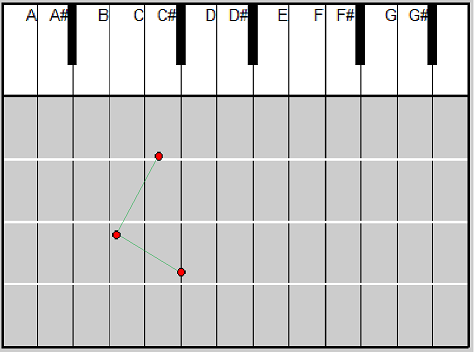November 26, 2012 report
Tiny robot swarm able to play tunes on a virtual piano (w/ video)

(Phys.org)—Researchers at Georgia Tech's Georgia Robots and InTelligent Systems (GRITS) Laboratory have succeeded in programming a swarm of very tiny robots to figure out for themselves how to go about playing a tune on a virtual piano displayed on a flat plane. One of the robots is the leader, and knows the tune and where a robot needs to be to create the notes that make up the tune; that information is conveyed to the other robots that make up the swarm, and the result is the playing of the familiar classical tune, Beethoven's "Fur Elise."
The robots, called Khepera bots by the team, are very small, just 5.5 centimeters across their thimble shaped bodies. Each has a host of sensors, including in their little hats and antenna and two wheels to allow for moving around. The whole idea is to create swarming behavior that mimics that seen in nature with birds, fish, etc.
With swarming, individual members take actions based on the location and actions of those around them. With this new research, the objective was to cause individual members of the swarm to appear at a certain location on the virtual keyboard at a certain time to cause the playing of a note; necessary ingredients to create music. The catch though, was that only one of them, the designated leader, was "told" what those data points were beforehand. Thus, the leader had to convey to the other bots where they needed to be and when. The team added some other elements to the goal to increase the difficulty of the assignment, which should theoretically help in learning more about how to program swarms. They wanted the bots to use the fewest number of themselves possible to play a song together, based on the tempo of the song (and to use the shortest routes possible all while avoiding collisions). If a song is played slow enough, for example, it could be performed by one little robot racing across the virtual keyboard (or by a person using just one finger perhaps on a real piano). As the tempo picks up, it becomes impossible for one bot to get the next note in time for the song to play correctly, thus another bot is added, starting a swarm.
What's remarkable about the playing bots is that the leader doesn't just tell every other bot where it's supposed to be, instead, it conveys information to those nearest to it, which in turn convey information to those nearest them, and so on. In this way, each robot is able to work out for itself where it is supposed to be and when – which is how it's supposed to be, because that's how swarming works in the natural world.
More information: gritslab.gatech.edu/home/2011/ … er-follower-control/
© 2012 Phys.org





















